Cats
Why Are Cats’ Noses Wet? Here’s What Science Could Tell Us About It!
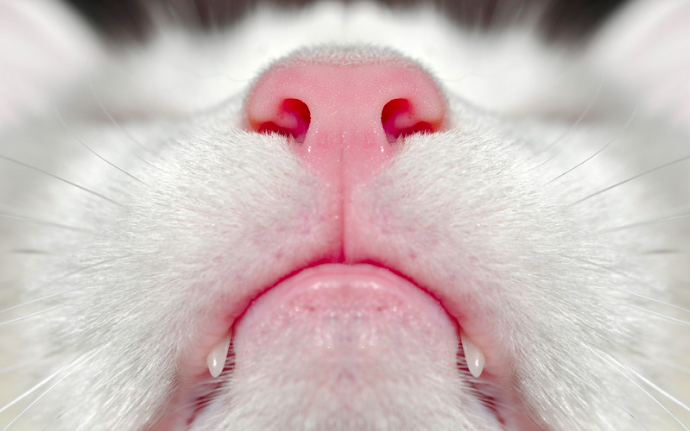
Why Are Cat’s Noses Wet? Here’s What Science Could Tell Us About It!
The early morning wake-up visits from your cat wouldn’t be complete without the feeling of your kitty’s damp nose against your face or cheek. If you have ever wondered why your cat has a moist nose, there are numerous causes behind it.
You may be shocked to know that many mammals have wet noses, including animals in the wild and those we keep as pets.
So, what’s the problem with animals like your cat having a moist nose? To better comprehend the reason why cats have damp noses, you have to know a bit about animal biology.
Get to Know the Rhinarium
The moisture formed by a cat’s nose largely originates through sweat glands situated on the rhinarium, which is the hairless skin surrounding the nostril apertures. Furthermore, the glands on the rhinarium and the drainage from a cat’s tear ducts also add to the reason why a cat’s noses are wet.
Of course, drinking water could cause a cat’s nose to be wet, as can environmental conditions like rain and snow. Cats can also have wet noses by grooming themselves, which they spend plenty of time doing.
Now that you know where the moisture originates from on a cat’s nose, we’ll dive into the nitty-gritty and tell you why felines have wet noses.
A cat’s wet nose keeps the body temperature in check.
As human beings, sweat pours out of our bodies on hot days and cools our bodies down. Unlike humans, cats cannot sweat all over their bodies as they only have sweat glands in their paws that provide cooling.
When cats grow hot and start feeling overheated, they use their moist hairless noses to create evaporation which helps them to regulate their body temperature normally.
A wet nose helps fine-tune Their body smell
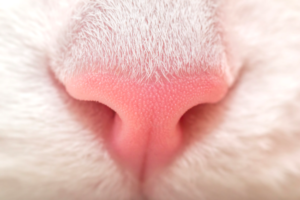
Unlike we humans who have taste buds covering our tongues, cats have extremely few of these taste receptors on their tongues to them determine what foods to eat. Instead of employing taste senses to pick what to eat, cats rely on their sense of smell.
The wetness on a cat’s nose collects scent particles, allowing the animal to hone in on odors to discern what they really are. If a cat has any problem like a respiratory infection that leaves its nose heated and very dry, the animal loses some of its ability to smell, affecting its hunger.
A cat’s nose moisture varies
Because cats normally have cold, wet noses, some cat owners think that a warm and dry nose signals a sick cat, but that’s not necessarily accurate. During the day, a cat’s nose temperature and moistness change.
Your cat could wake you up by placing or touching you with his wet, cool nose on your chin or face and have a warm, dry nose later in the day when he’s lounging around.
Dr. Patterson of the School of Veterinary Medicine & Biomedical Sciences at Texas A&M claimed that “wet or dry noses are not a symptom of sickness per se” and whether your pet’s nose is dry or wet is “largely connected to the temperature and humidity in their environment they are.”
When do I worry about the dry nose of my cat?
Though you don’t have to worry if your cat’s nose is sometimes dry, you should be bothered if your cat shows certain signs of disease. The Things to watch for include excessive thirst, decreased appetite, weight loss, and vomiting or diarrhea.
If your cat’s nose seems always to be dry and you observe any of these indicators, you should please contact your veterinarian to find out what’s wrong with your cat.
A wet drippy nose on your cat may be a warning sign
While it’s usual for a cat to have a cold, wet nose, it is not normal for a cat to have a nose that runs or drips. If you observe your cat has a runny nose, he could be suffering from an upper respiratory illness or allergies.
If the drainage coming out of your cat’s nose is thick and pigmented, it can be a bacterial infection on the cat. Any cat that is suffering from an upper respiratory infection would usually cough, sneeze, and have wet eyes.
The cat will probably also develop a fever and will refuse to eat food. If the drainage coming out from the nose is clean, it’s likely an allergic reaction. Either way, play it safe and consult your veterinarian quickly.
Is a wet nose a signal for a healthy pet?
Have you ever heard that a cat’s wet nose is an indication that the pet is healthy? Even though that’s often the case, it’s not always true. A moist nose can help your pet in various ways, but it doesn’t necessarily guarantee optimum health for your pet.
How does my cat’s wet nose help the cat?
Have you ever been awoken at 5 a.m. by a cold, wet nose pushing against your hand or face? Although the ability to readily wake lazy humans is surely one perk of a wet nose, your dog or cat gets from a moist nose in a few other ways.
Scents are highly significant to your dogs. Animals mark their territory by leaving small scent traces when they rub against people and objects. Outside, pets define boundaries by peeing or defecating in strategic spots.
When other animals inhale those scents, they understand the message your pet is sending. A wet nose boosts your pet’s capacity to distinguish odors. Microscopic smell particles float through the air and land on your pet’s nose.
If the nose is wet, they’ll adhere to it rather than drop off, which makes distinguishing odors much easier. A damp nose also helps keep your pet cool. As moisture evaporates from the nose, it creates a cooling effect. Luckily, it’s easy to replenish lost moisture with a simple swipe of the tongue.
Can my pet’s nose be too moist?
A damp nose isn’t necessarily a good indication. If you discover that your pet’s nose is suddenly very wet, an upper respiratory infection might be blamed. When dogs and cats develop a cold or other infection, they may experience runny noses, much like people do.
Is a dry nose a bad signal?
A warm, dry nose isn’t usually a signal that your pet is ill or sick. There are some dogs or cats that naturally have dry noses. Even though your pet generally has a cold, moist nose, it may become dryer and warmer after having had a nap or a few hours spent in the sun. Dryness may also be a natural result of aging.
A dry nose might indicate dehydration or disease, particularly if your pet’s nose is usually wet. You may tell if your pet is dehydrated by inspecting its gums. Dehydration typically makes the gums look pale instead of pink.
The scruff test offers another technique to assess if dehydration is a concern. Perform the test by gently tugging up your pet on the skin on the back. If your cat or dog is not dehydrated, the skin will soon snap back against the body.
If your furry companion is dehydrated, it will take a few seconds for the skin to return to normal. Other indications that may indicate illness in pets, whether the nose is dry or moist, include:
- Unusual Lethargy
- Loss of Appetite
- Change in Behaviour
- Obvious Pain
- Urinating More or Less than Normal
- Hiding (in Cats)
- Coughing
- Vomiting and Diarrhea
- Lameness
- Constant Scratching
- Hair Loss
- Difficulty Moving or Walking
- Weight Loss
- Changes in Bowel Habits
- Lumps
- Cloudy or Red Eyes
To conclude
Your kitty pet relies on that cute nose to explore his environment and provide him with an excellent sense of smell. It’s typical for cats to have wet noses since the wetness helps them regulate their body temperature and also fine-tune their sense of smell in their environment.
So the next time your kitty cat snuggles up to you, take a hard look at that lovely tiny nose and appreciate how vital it is!
Frequently Asked Questions (FAQs)
Why are cats’ noses usually wet?
Cats’ noses are typically wet due to a thin layer of mucus that helps them smell more effectively. This moisture captures scent particles, enhancing their sense of smell, which is crucial for communication, hunting, and exploring their environment.
Is it normal for a cat’s nose to be dry sometimes?
Yes, it is normal for a cat’s nose to be dry occasionally. Factors such as the environment, temperature, or recent grooming can affect the moisture level of a cat’s nose. However, if the dryness is persistent and accompanied by other symptoms, it may indicate an underlying health issue.
Can a wet nose indicate my cat’s health status?
A wet nose is generally a sign of good health, but it’s not a definitive indicator. While a consistently wet nose is normal, sudden changes in the wetness or temperature of your cat’s nose, especially if accompanied by lethargy, coughing, or nasal discharge, could suggest a health problem and warrant a visit to the vet.
What causes a cat’s nose to be excessively wet or runny?
An excessively wet or runny nose in cats can be caused by allergies, respiratory infections, or irritants in the environment. If your cat’s nose is persistently runny or has colored discharge, it’s important to consult with a veterinarian to determine the underlying cause and appropriate treatment.
How can I tell if my cat’s wet nose is a sign of a problem?
While a wet nose is typically normal, other signs such as changes in behavior, appetite, or the presence of other symptoms like coughing, sneezing, or nasal discharge can indicate a problem. If you notice any of these accompanying symptoms, it’s best to seek veterinary advice to ensure your cat’s health and well-being.
We appreciate you for taking the time to read this article!
Finally, we hope you found this article interesting? And what do you think about ”Why Are Cats’ Noses Wet? Here’s What Science Could Tell Us About It!!?”
Please feel free to share or inform your friends about this article and this site, thanks!
And let us know if you observe something that isn’t quite right.
Cats
Clever Cats: Breeds That Learn Fast
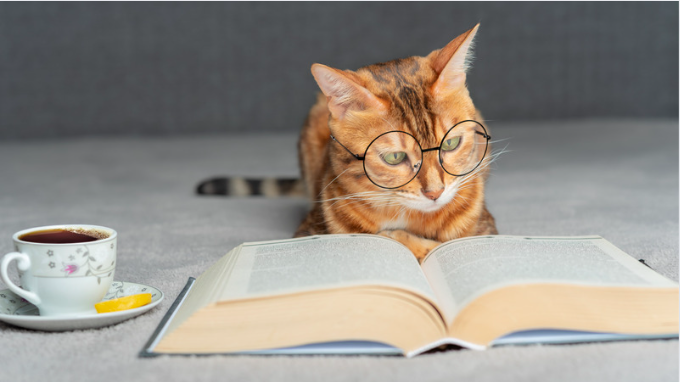
Clever Cats: Breeds That Learn Fast
Cats have always fascinated us with their agility, independence, and sometimes enigmatic behavior. Among the vast array of feline breeds, some stand out for their remarkable intelligence and ability to learn quickly.
In this article, we will delve into the world of these exceptional cat breeds, exploring their unique characteristics, training capabilities, and what makes them such quick learners.
Whether you’re a seasoned cat owner or considering adopting a new feline friend, this comprehensive guide will help you understand the breeds that are not only intelligent but also a joy to train.
Why Intelligence Matters in Cats
Understanding Feline Intelligence
Feline intelligence is a multi-faceted trait that encompasses problem-solving abilities, social learning, and adaptability. Unlike dogs, cats often showcase their intelligence in more subtle ways, such as manipulating objects to get what they want or learning routines and commands.
Benefits of Owning Intelligent Cats
Owning an intelligent cat comes with several benefits. These cats are more interactive and engaging, making them excellent companions. They can learn tricks, follow commands, and even understand basic household rules, which makes living with them more enjoyable and less challenging.
Top Cat Breeds Known for Their Intelligence
Abyssinian
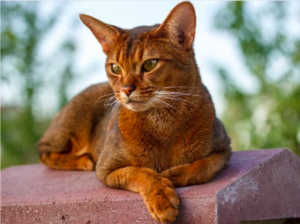
Overview
The Abyssinian is often hailed as one of the smartest cat breeds. Known for their curiosity and playful nature, Abyssinians are quick learners who thrive on mental stimulation.
Training and Activities
Abyssinians are highly trainable and enjoy interactive toys and puzzle feeders. They can learn tricks such as fetching and even walking on a leash. Their love for heights means they appreciate cat trees and climbing structures.
Siamese
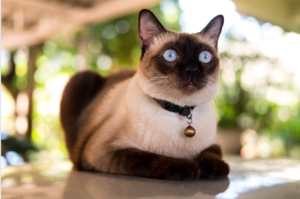
Overview
Siamese cats are not only intelligent but also highly vocal and sociable. They form strong bonds with their owners and are always eager to engage in activities.
Training and Activities
Siamese cats are quick to learn tricks and commands. They enjoy interactive play and can be trained to perform simple tasks like opening doors or retrieving items. Their vocal nature also makes them responsive to verbal cues.
Bengal
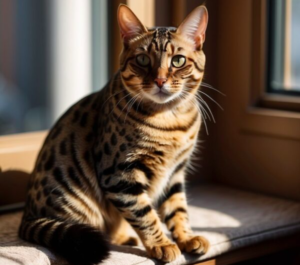
Overview
Bengals are known for their striking appearance and high energy levels. Their intelligence is reflected in their ability to solve problems and learn complex tasks.
Training and Activities
Bengals enjoy activities that challenge their minds, such as agility courses and puzzle toys. They can be trained to walk on a leash and perform tricks. Providing them with interactive playtime helps in channeling their energy positively.
Burmese
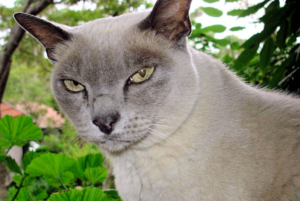
Overview
Burmese cats are affectionate, people-oriented, and intelligent. They enjoy being involved in family activities and can be trained to follow various commands.
Training and Activities
Burmese cats are quick learners and respond well to positive reinforcement. They enjoy learning tricks, playing fetch, and interactive games that stimulate their minds.
Scottish Fold
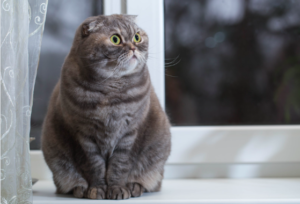
Overview
Scottish Folds are known for their distinctive folded ears and sweet demeanor. Despite their calm appearance, they are intelligent and can learn quickly.
Training and Activities
Scottish Folds enjoy interactive toys and games. They can learn tricks and commands and appreciate routines that keep their minds engaged.
Training Tips for Intelligent Cats
Start Early
Begin training your cat as early as possible. Kittens are more receptive to learning new behaviors and routines.
Use Positive Reinforcement
Reward your cat with treats, praise, or playtime whenever they successfully perform a desired behavior. Positive reinforcement strengthens the association between the action and the reward.
Keep Sessions Short and Fun
Cats have shorter attention spans than dogs, so keep training sessions brief and enjoyable. Incorporate playtime to make learning fun for your cat.
Be Patient and Consistent
Patience and consistency are key when training cats. Repeat commands and routines regularly, and avoid punishing your cat for mistakes. Consistency helps reinforce learning and builds trust.
Challenges of Training Intelligent Cats
Independence and Stubbornness
Intelligent cats can sometimes be independent and stubborn. They might choose to ignore commands if they are not in the mood, so it’s important to understand their behavior and work with it.
Need for Mental Stimulation
Highly intelligent cats require constant mental stimulation. Boredom can lead to behavioral issues, so ensure they have plenty of toys, activities, and interaction to keep their minds engaged.
Managing High Energy Levels
Breeds like Bengals have high energy levels that need to be managed. Providing them with enough physical and mental exercise is crucial to prevent destructive behavior.
Living with Intelligent Cats
Creating an Enriched Environment
An enriched environment is essential for intelligent cats. This includes a variety of toys, climbing structures, scratching posts, and interactive feeders to keep them stimulated.
Social Interaction
Intelligent cats thrive on social interaction. Spend quality time playing, training, and simply bonding with your cat to ensure they feel valued and engaged.
Understanding Their Needs
Each intelligent breed has its own unique needs and preferences. Understanding these and catering to them will help you build a strong and positive relationship with your cat.
Conclusion
Owning an intelligent cat can be an incredibly rewarding experience. These quick learners bring joy, challenge, and companionship to their owners. By understanding their unique characteristics and providing the right environment and training, you can foster a deep and fulfilling relationship with your feline friend.
Whether you choose an Abyssinian, Siamese, Bengal, Burmese, or Scottish Fold, you’re sure to enjoy the remarkable intelligence and personality they bring into your home.
Frequently Asked Questions (FAQs)
What makes a cat breed intelligent?
Intelligent cat breeds often show high levels of problem-solving abilities, adaptability, and social learning. They can quickly learn commands, tricks, and routines.
Can all cats be trained?
While some breeds are more receptive to training than others, all cats can be trained to some extent. Patience, consistency, and positive reinforcement are key to successful training.
What are the best toys for intelligent cats?
Interactive toys, puzzle feeders, and climbing structures are ideal for intelligent cats. These toys provide mental stimulation and keep them engaged.
How do I keep my intelligent cat from getting bored?
Provide a variety of toys, engage in regular playtime, and introduce new activities regularly. Rotating toys and creating an enriched environment also help prevent boredom.
Are intelligent cats more difficult to care for?
Intelligent cats can be more demanding in terms of mental stimulation and interaction. However, with the right approach and environment, they can be delightful companions.
We appreciate you for taking the time to read this article!
Finally, we hope you found this article interesting? And what do you think about ”Clever Cats: Breeds That Learn Fast!?”
Please feel free to share or inform your friends about this article and this site, thanks!
And let us know if you observe something that isn’t quite right.
Cats
The Enchanting Scottish Fold: A Guide to the Adorable Feline with Folded Ears
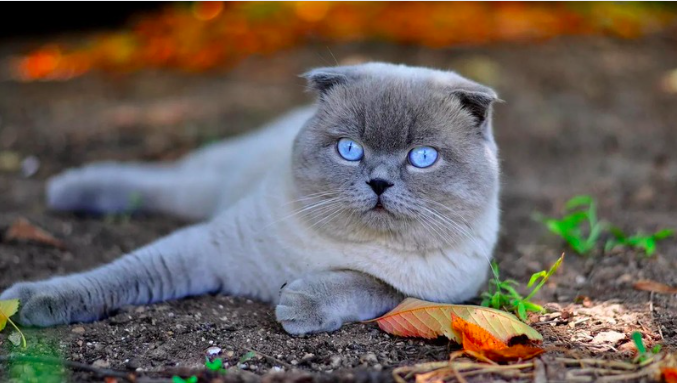
The Enchanting Scottish Fold: A Guide to the Adorable Feline with Folded Ears
Welcome to the world of the Scottish Fold cat, where charm and curiosity meet in an irresistibly adorable package. With their distinctive folded ears and sweet expression, Scottish Folds have captured the hearts of cat lovers around the world. Originally hailing from Scotland, these cats are known for their gentle demeanor, playful nature, and loving personality.
In this comprehensive guide, we will delve into the fascinating world of Scottish Fold cats, exploring their history, physical characteristics, personality traits, and care requirements. Whether you’re a seasoned cat owner or considering adding a feline friend to your family, the Scottish Fold’s unique charm and affectionate nature make them a delightful addition to any home. Join us as we unravel the enchanting tale of the Scottish Fold cat and discover why they are such beloved companions.
Fold
Overview
The Scottish Fold cat is a charming and distinctive breed known for its unique folded ears and sweet expression. Originating from Scotland in the 1960s, these cats have captured the hearts of many with their endearing appearance and affectionate nature. Scottish Folds are known for their gentle and loving temperament, making them wonderful companions for families and individuals alike.
History and Origins
The Scottish Fold breed traces its roots back to a white barn cat named Susie, who was found in Scotland in the early 1960s. Susie had a unique genetic mutation that caused her ears to fold forward, giving her an owl-like appearance. This trait was passed down to her kittens, and thus, the Scottish Fold breed was born. The breed quickly gained popularity for its distinctive look and friendly demeanor, and it was officially recognized by cat registries in the 1970s.
Physical Characteristics
- Folded Ears: The most distinctive feature of the Scottish Fold is its folded ears, which give the cat a sweet and owl-like appearance. Not all Scottish Folds have folded ears; some may have straight ears, known as “straights,” which are also common in the breed.
- Coat and Colors: Scottish Folds can have either a short or long coat, both of which are dense and plush. They come in a variety of colors and patterns, including tabby, tortoiseshell, and solid colors like white, black, and blue.
- Body Structure: Scottish Folds are medium-sized cats with a rounded appearance. They have sturdy bodies, round faces, and large, expressive eyes that give them a sweet and gentle expression.
Personality and Behavior
Scottish Folds are known for their calm and laid-back demeanor. They are affectionate cats that enjoy being around people and are often described as “lap cats” due to their love of cuddling. They are also known for their playful nature and enjoy interactive toys and games. Scottish Folds are generally good with children and other pets, making them a great choice for families.

Health and Care
- Ear Care: Due to their folded ears, Scottish Folds may be prone to ear infections. It’s important to regularly check and clean their ears to prevent issues.
- Grooming: Scottish Folds have dense coats that require regular grooming to prevent matting and tangling. Weekly brushing is usually sufficient to keep their coat in good condition.
- Health Concerns: Scottish Folds are generally healthy, but they may be prone to certain genetic conditions, including a skeletal disorder known as osteochondrodysplasia. Responsible breeding practices can help minimize the risk of these health issues.
Training and Activities
Scottish Folds are intelligent cats that can be trained to perform tricks and commands. They enjoy interactive play and benefit from toys that stimulate their minds and bodies. Providing them with scratching posts and other outlets for their natural behaviors can help keep them happy and healthy.
Compatibility with Families and Other Pets
Scottish Folds are known for their gentle and affectionate nature, making them great companions for families. They are good with children and other pets, including dogs, and can adapt well to different environments. Their loving and sociable nature makes them a popular choice for households looking for a friendly and affectionate pet.
Conclusion
The Scottish Fold cat is a unique and charming breed known for its folded ears and sweet expression. With their gentle demeanor and affectionate nature, Scottish Folds make wonderful companions for families and individuals alike. Whether you’re looking for a lap cat to cuddle with or a playful friend to keep you entertained, the Scottish Fold cat is sure to bring joy and companionship to your home.
FAQs about Scottish Fold Cats
Why do Scottish Folds have folded ears?
Scottish Folds have a genetic mutation that affects the cartilage in their ears, causing them to fold forward. This unique trait gives them their distinctive appearance.
Are Scottish Folds prone to ear problems due to their folded ears?
Yes, Scottish Folds may be more prone to ear infections due to the fold in their ears, which can trap dirt and moisture. Regular cleaning and monitoring of their ears can help prevent issues.
Do Scottish Folds have any health issues associated with their folded ears?
Scottish Folds may be prone to a condition called osteochondrodysplasia, which affects the development of their cartilage and bones. Responsible breeding practices can help reduce the risk of this condition.
Are Scottish Folds good with children and other pets?
Scottish Folds are known for their gentle and friendly nature, making them good companions for families with children and other pets. They enjoy socializing and being part of the family.
Do Scottish Folds require a lot of grooming?
Scottish Folds have dense coats that require regular grooming to prevent matting and tangles. Weekly brushing is recommended to keep their coat in good condition.
We appreciate you for taking the time to read this article!
Finally, we hope you found this article interesting? And what do you think about ”The Enchanting Scottish Fold: A Guide to the Adorable Feline with Folded Ears!?”
Please feel free to share or inform your friends about this article and this site, thanks!
And let us know if you observe something that isn’t quite right.
Cats
The Enchanting Burmese Cat: Affectionate, Playful, and Loyal
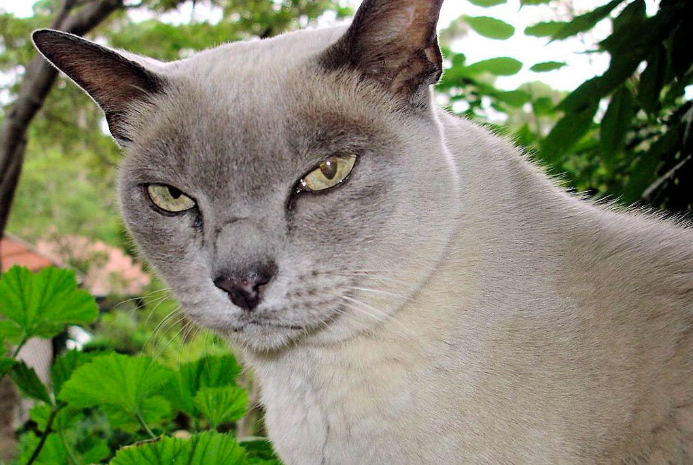
The Enchanting Burmese Cat: Affectionate, Playful, and Loyal
Enter the world of the Burmese cat, where elegance meets affection in a charming feline companion. Originating from the temples of Burma, these cats have captured the hearts of cat lovers worldwide with their striking appearance and loving nature. With their sleek coats, expressive eyes, and playful demeanor, Burmese cats are not just pets; they are cherished members of the family.
In this comprehensive guide, we delve into the captivating world of Burmese cats, exploring their history, physical characteristics, personality traits, and care requirements. Whether you’re a seasoned cat owner or considering adding a feline friend to your family, the Burmese cat’s unique blend of beauty, intelligence, and affection is sure to captivate you. Join us as we unravel the enchanting tale of the Burmese cat and discover why they are such beloved companions.
Burmese
Overview
The Burmese cat is a breed known for its striking appearance and affectionate nature. Originating from Burma (now Myanmar), these cats are renowned for their sleek, muscular bodies, expressive eyes, and silky coats. Burmese cats are often described as “people-oriented,” as they form strong bonds with their human companions and enjoy being part of the family. Their playful and curious nature makes them delightful companions for both children and adults alike.
History and Origins
The history of the Burmese cat can be traced back to ancient Burma, where they were considered sacred and kept by monks in temples. They were later brought to the West in the early 20th century and quickly gained popularity for their striking appearance and affectionate personality. The breed has since become a favorite among cat enthusiasts worldwide, known for its loving and loyal nature.
Physical Characteristics
- Coat and Colors: Burmese cats have short, sleek coats that lie close to the body. They come in a variety of colors, including sable, champagne, blue, and platinum. The coat is soft and silky to the touch, adding to the breed’s overall charm.
- Body Structure: Burmese cats are medium-sized with a muscular build. They have rounded heads, large, expressive eyes, and short, straight noses. Their compact bodies give them a sturdy appearance, and they move with grace and agility.
- Eyes and Ears: Their eyes are one of their most striking features, being large, expressive, and usually a deep, rich color that complements their coat. Their ears are medium-sized, slightly rounded at the tips, and set wide apart on the head.
Personality and Behavior
Burmese cats are known for their affectionate and sociable nature. They are often described as “dog-like” due to their tendency to follow their owners around the house and seek out human companionship. They are also highly intelligent and enjoy interactive play, making them great companions for families with children or other pets.
In addition to their affectionate nature, Burmese cats are also known for their vocalizations. They have a soft, sweet voice that they use to communicate with their owners, often engaging in “conversations” and expressing their needs and desires.

Health and Care
- Grooming: Burmese cats have short coats that require minimal grooming. Weekly brushing is usually sufficient to remove loose hair and keep their coat shiny. They also benefit from regular dental care to prevent oral health issues.
- Diet: A high-quality, balanced diet is essential for maintaining the health and vitality of Burmese cats. They should be fed a diet that is appropriate for their age, size, and activity level to ensure they receive the nutrients they need.
- Health Concerns: Burmese cats are generally healthy, but they can be prone to certain genetic conditions such as hypertrophic cardiomyopathy (HCM) and diabetes. Regular veterinary check-ups and a healthy diet can help manage these risks.
Training and Activities
Burmese cats are intelligent and can be trained to perform various tricks and commands. They enjoy interactive play and thrive on mental stimulation. Providing them with toys, puzzle feeders, and opportunities for play can help keep them entertained and prevent boredom.
Compatibility with Families and Other Pets
Burmese cats are known for their loving and social nature, making them great companions for families. They get along well with children and other pets, including dogs, as long as they are properly introduced. Their affectionate demeanor and playful nature make them a popular choice for households looking for a friendly and engaging pet.
Conclusion
The Burmese cat is a breed beloved for its affectionate nature, striking appearance, and playful personality. Whether you are looking for a loyal companion or a playful friend, the Burmese cat is sure to bring joy and warmth to your home. With their loving nature and sociable demeanor, Burmese cats make wonderful pets for families and individuals alike, enriching their lives with their presence and affection.
FAQs about Burmese Cats
What is the temperament of a Burmese cat like?
Burmese cats are known for their affectionate and social nature. They are often described as “dog-like” due to their loyalty and tendency to follow their owners around the house. They enjoy being involved in family activities and form strong bonds with their human companions.
Are Burmese cats good with children and other pets?
Yes, Burmese cats are generally good with children and other pets. They are playful and enjoy interactive play, making them great companions for families with children. They also get along well with other pets, including dogs, especially if they are introduced properly.
Do Burmese cats require a lot of grooming?
Burmese cats have short, sleek coats that require minimal grooming. Weekly brushing is usually sufficient to remove loose hair and keep their coat shiny. They also benefit from regular dental care to prevent oral health issues.
Are Burmese cats vocal?
Burmese cats are known for their soft, sweet voice, but they are not excessively vocal. They use their voice to communicate with their owners, often engaging in “conversations” and expressing their needs and desires.
What kind of environment is best for a Burmese cat?
Burmese cats thrive in environments where they have plenty of opportunities for play and interaction. They enjoy being part of the family and should have access to toys, scratching posts, and other enrichment activities. They also enjoy having access to outdoor enclosures or safe outdoor spaces where they can explore and indulge their natural instincts.
We appreciate you for taking the time to read this article!
Finally, we hope you found this article interesting? And what do you think about ”The Enchanting Burmese Cat: Affectionate, Playful, and Loyal!?”
Please feel free to share or inform your friends about this article and this site, thanks!
And let us know if you observe something that isn’t quite right.
-

 Pet Care2 years ago
Pet Care2 years agoThe Best Dog Collars For 2022
-

 Dogs2 years ago
Dogs2 years agoBichon Frise: The Happy, Playful, and Cuddly Companion
-

 Trending Pet Stories1 year ago
Trending Pet Stories1 year ago2023 ‘World’s Ugliest Dog’ Winner: Scooter’s Tale of Resilience
-

 Animals2 years ago
Animals2 years agoAre There Animals Having Down Syndrome?
-

 Pets2 years ago
Pets2 years agoThe Fascinating World Of The Red Chameleon
-

 Dogs2 years ago
Dogs2 years agoTop 10 Most Popular Dog Breeds According To AKC.
-

 Dogs2 years ago
Dogs2 years ago21 Dog Breeds That Resemble Bears Or Teddy Bears!
-

 Dogs2 years ago
Dogs2 years agoEskimo Dogs from Canada – What Are They? – Find Out!







